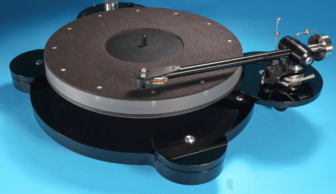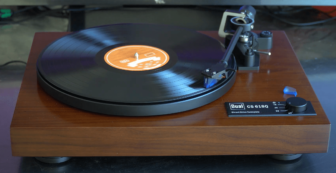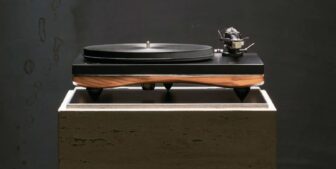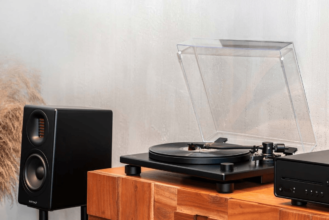Reloop Turn X Review
We had the Reloop Turn 5 in our hands, a pretty flawless turntable with direct drive and DJ look. The new top model from the Münster-based company is called Turn X and looks significantly tamer.
by Alexander Rose-Fehling
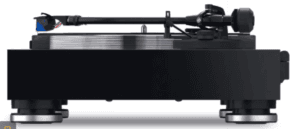
Whoever hastily types reloop.com into their trusted browser may be put off: Here you find the pure DJ products of the company Reloop. If you’re searching for the more straightforward, purist turntables, you have to enter reloophifi.com. And behold, five models are already available.
The entry-level model is the Turn 2 with belt drive for $378. The Turn 3 also has a belt drive but additionally an A/D converter with USB input ($556.50). The Turn 5 astonishingly still costs $840, the new Turn 7 costs $1,050, also relies on a belt, and has an illuminated acrylic platter. All devices are equipped with decent Ortofon cartridges. There’s something here for everyone who doesn’t want a cheapie from Amazon, for example, because things like measurements and sound aren’t completely irrelevant to them.
Without Belt
To say it right away: The Turn X is also outstanding in terms of measurements! No wonder, a lot has been done right here. The direct drive with DC motor is a product of mass production that delivers great quality at an affordable price. An ultra-low-noise switching power supply powers the motor and enables three rotation speeds: 33, 45, and 78 RPM. But what does direct drive mean again? Here, the platter is not set in rotation by a rubber belt that goes around the platter and a small pulley on the motor. In direct drive, the platter axis itself is part of the motor. This has the disadvantage that irregularities in the motor are fully transmitted to the platter. This used to often give direct drives a somewhat nervous sound, but today this generally no longer plays a role.
In a belt drive, vibrations of the motor are also dampened by the belt on the way to the platter. This too doesn’t happen in a direct drive, making motor quality even more important. The turntables of this design found today can be called absolutely solid. The platter accelerates ultra-fast and stops even faster thanks to electronic braking. These are undoubtedly DJ genes, which I like. It is controlled by a rotary knob on the top of the piano-lacquered MDF plinth. This one-knob operation is also known from the Magnat MTT-990: There is no separate speed selection button. Nor are there things like a built-in phono stage, A/D converter, or Bluetooth. No, here you have a purist turntable before you, where everything that could negatively affect the sound or drive up the price has been omitted.
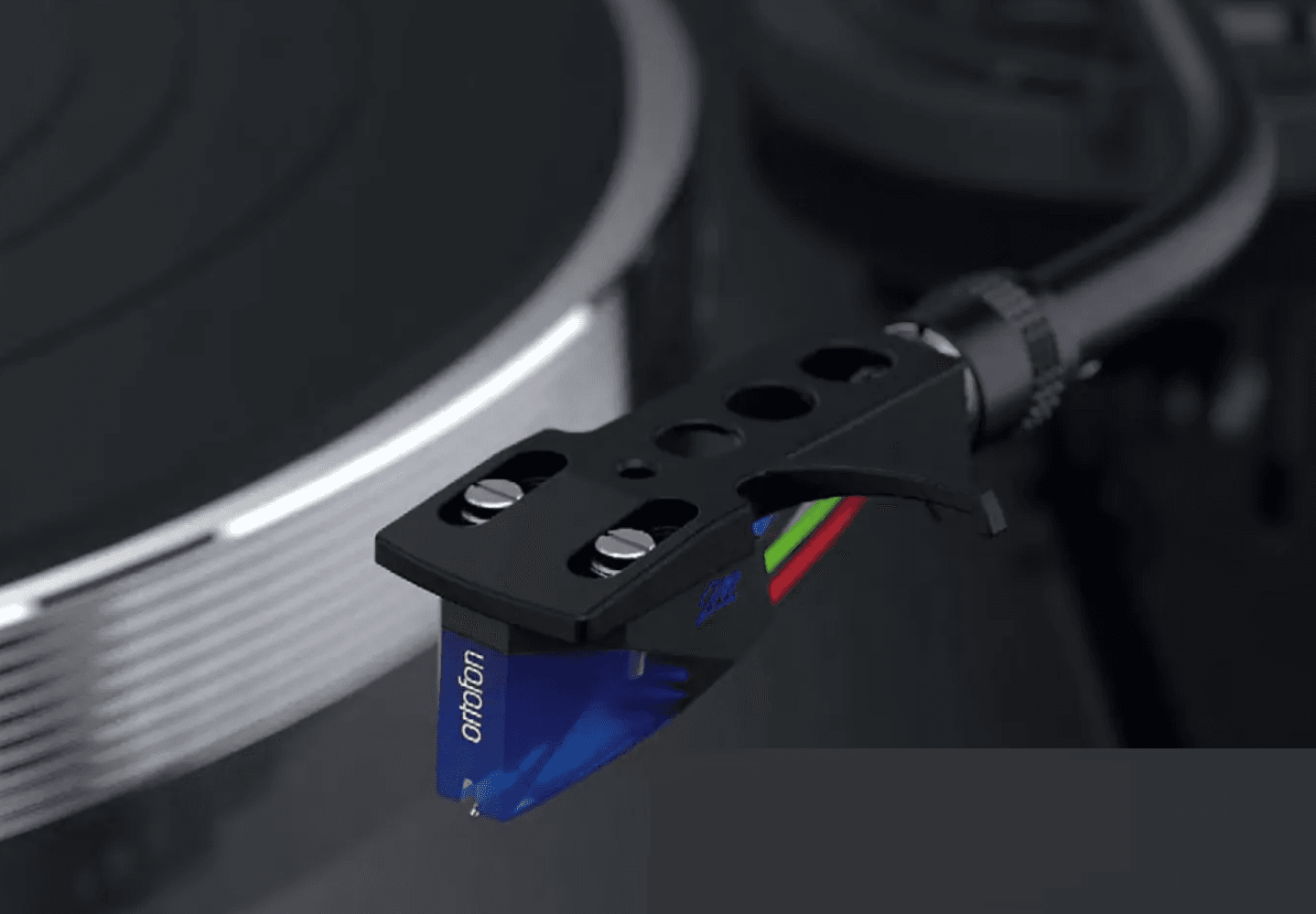
The platter is made of aluminum, 2.25 cm thick and just over 2 kilograms heavy. It is slightly recessed into the plinth, presumably for aesthetic reasons, so you only see 2 cm of the platter height. A look at the underside shows that the platter is fully damped with thick rubber. Additionally, a rubber mat that rests on the platter provides further damping. Here you can and should experiment at some point because rubber is rarely the most convincing solution in terms of sound. Fully convincing, however, are the height-adjustable feet that isolate the Turn X from the surface. They work so well that they probably also come from the DJ sector, where it’s essential to keep out completely different vibrations due to the high levels in the club.
Appearance and Features Are Spot On: The turntable is cleanly lacquered, and all components are of very high quality.
Arm Included
The aluminum tonearm is 9 inches long. It is very smoothly height-adjustable, even while listening to music. One should not overestimate the vertical tracking angle (VTA), but in cases of significant deviations, it’s very useful to be able to adjust the VTA when changing cartridges. For operation with the Ortofon 2M Blue, the arm height is ideal from the factory. At the front end of the tonearm sits a headshell according to SME standard, meaning you can easily unscrew it when changing cartridges. This reduces the risk of damaging the cartridge during installation or removal. In case of needle damage, you’d have to shell out $156.45 for the replacement stylus of the 2M Blue. The complete cartridge costs $208.95 separately. Included in the delivery is a tinted dust cover that adds extra style to the black turntable. This is really a very pretty turntable. Besides the cover, there’s also a phono cable with grounding in the box. And by the way: What applies to the Turn X applies to all Reloop products: They are designed and developed in Germany and produced by selected Asian partners.
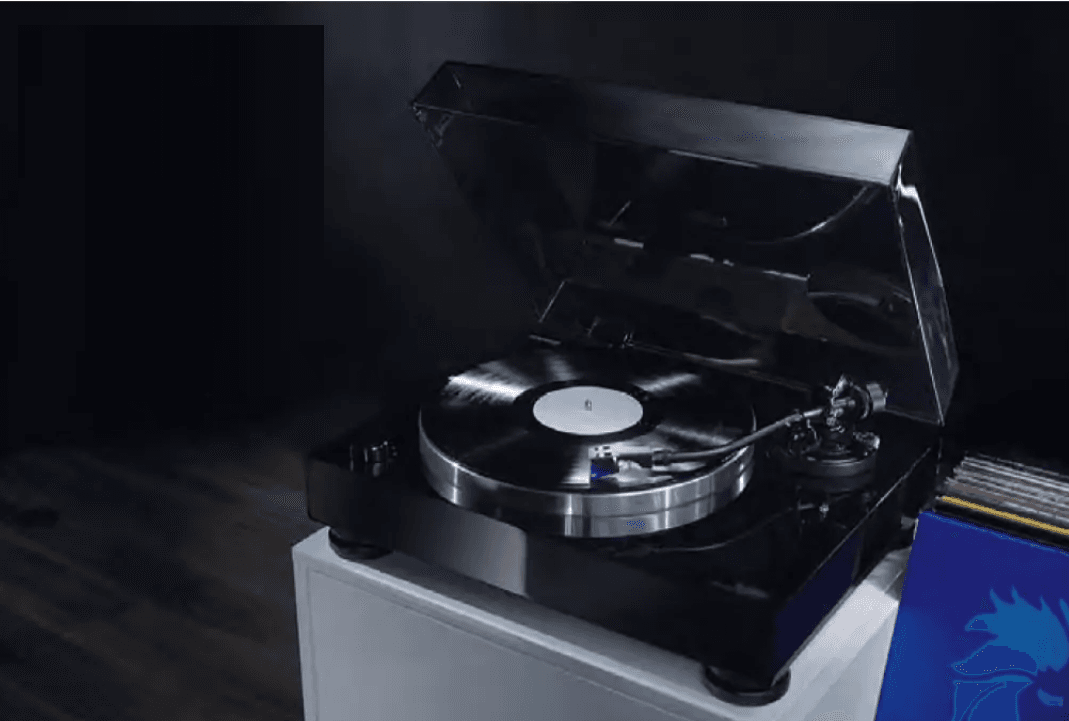
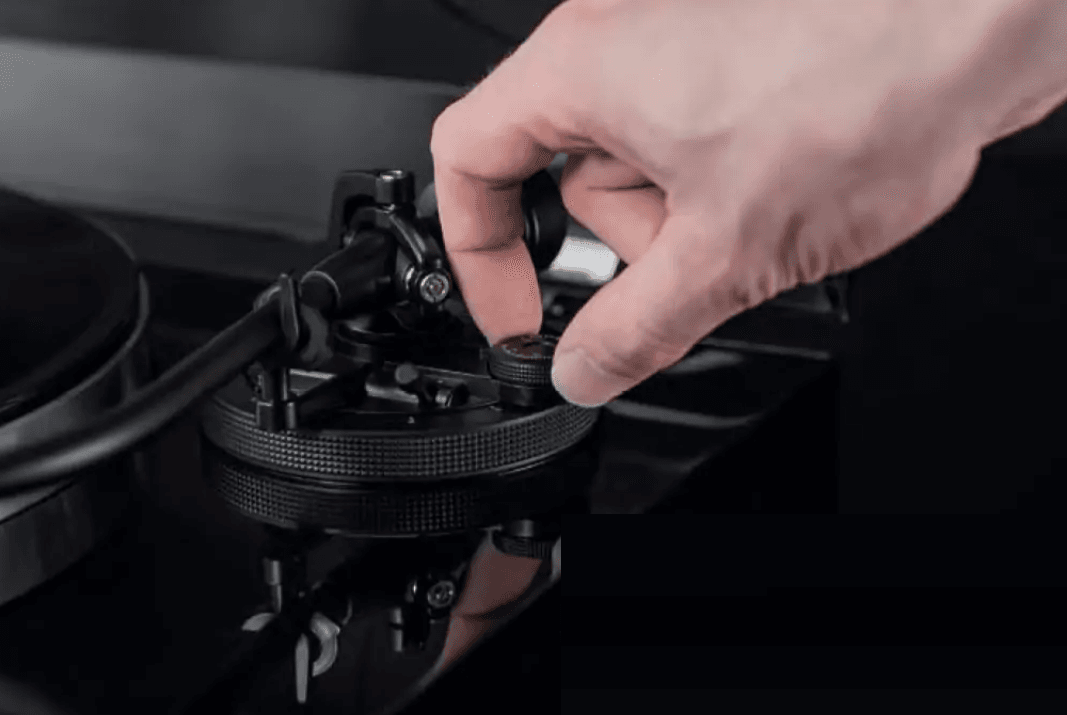
Listening Test
Due to the very good experiences we have had with Reloop devices so far, we went into the listening test very relaxed. What could possibly go wrong? And nothing did go wrong. Although we can’t avoid a bit of criticism. Let’s start with that: The lift drops the arm a bit too quickly. On records with a too thick edge, the diamond slides down this thickening, which always sounds dramatic and can also cause you to miss the first seconds of the music. This is not the most common problem with records, but in such a case, you should set the needle down by hand. If you do this, you immediately notice that a really good tonearm is installed here, which has play-free bearings and is very pleasant to operate.
To test an arm’s limits, I like to put on my Music on Vinyl edition of “Time Out,” which is miserably centered. If you’ve ever wondered how that happens: Immediately after pressing an LP, the excess vinyl protruding from the press is cut off. If the cutting tools are too blunt, it can lead to “shifts” in the centering. The Reloop arm handled this LP excellently, even though it swung almost as much as the band around Dave Brubeck… There were absolutely no fluctuations in the music to be detected.
But now, finally, music. “Pomp And Circumstance” (London Philharmonic Orchestra under Georg Solti) makes it clear after two seconds that the measurements are excellent. A moderate wow and flutter is immediately unmasked here. But the direct drive does everything right, and to an extent that even many really expensive turntables can’t achieve. The music came out of the speakers very lively and emphatically rhythmic, also broadly staged and well-resolved.
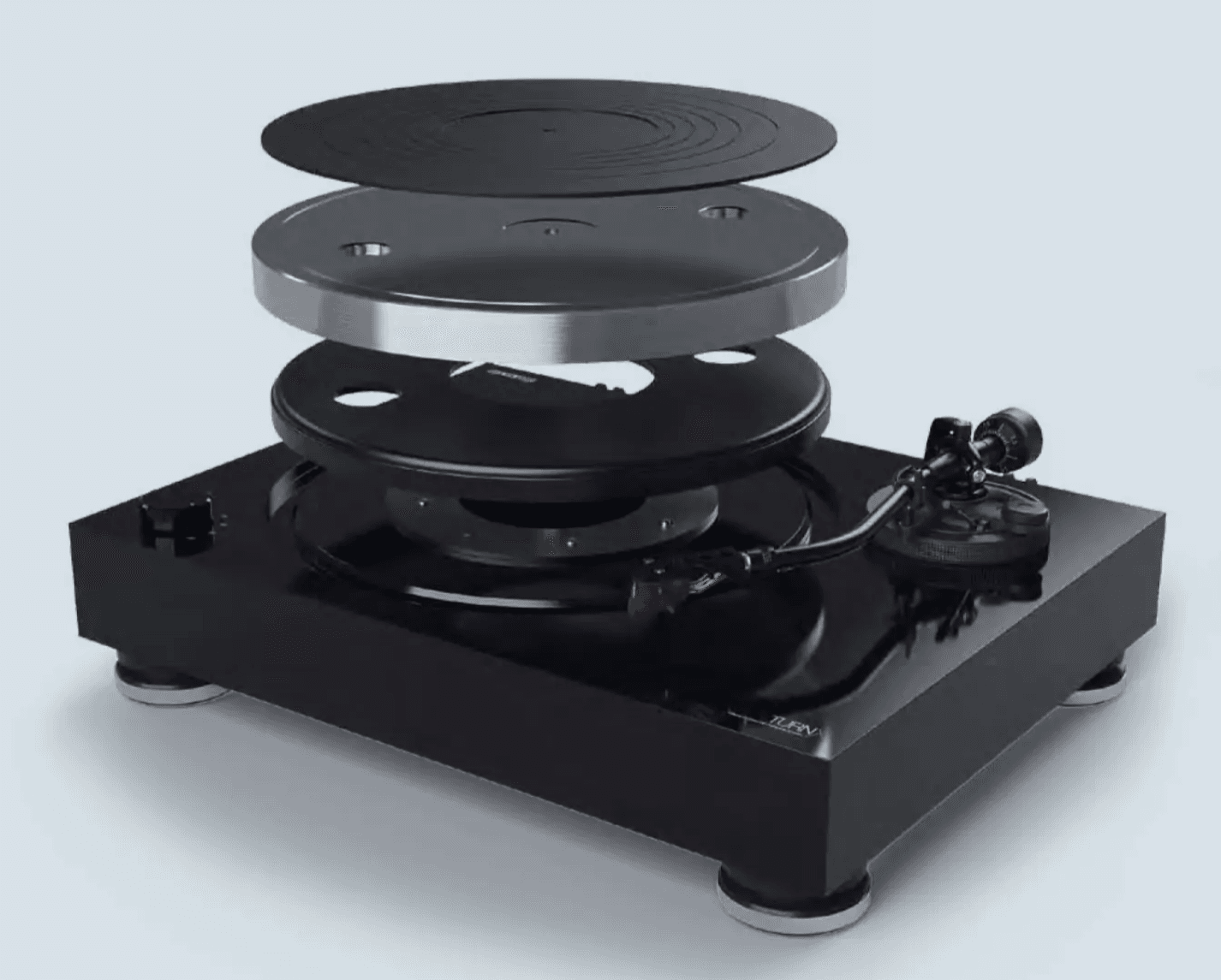
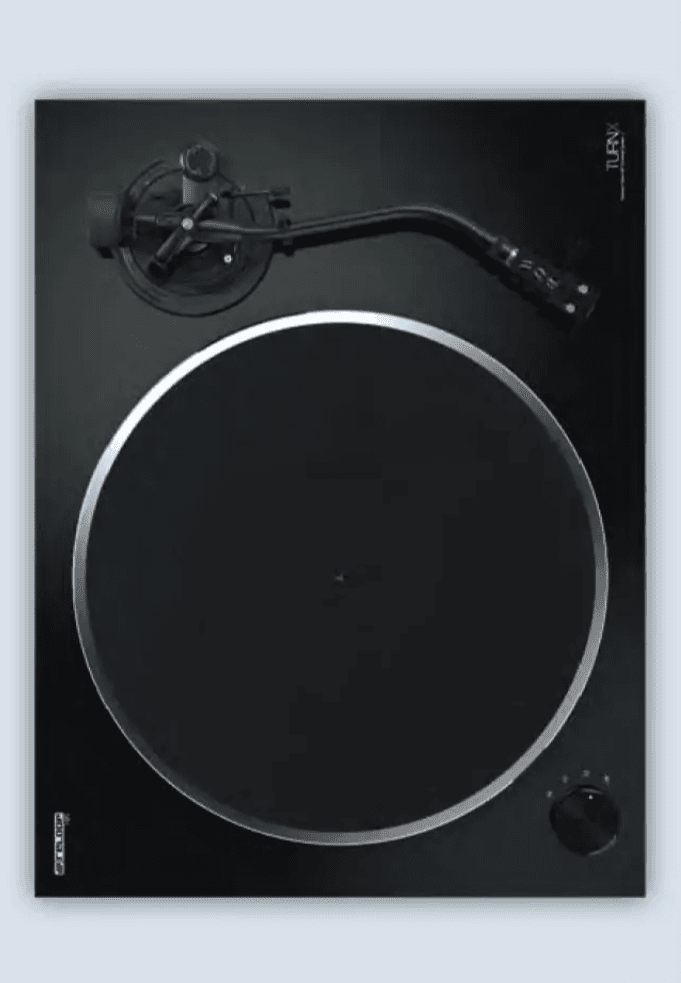
The good, small MM cartridge ensured clean tracking and clear music reproduction. You can certainly live well with this performance, but I wanted to get a bit more out of the Reloop, more timbre, a touch of warmth. For this, we screwed the wonderful Axiss Mustang (around $315) and later the Ortofon MC Quintet Bronze (around $735) into the headshell. And behold: Both systems improved the reproduction in a very welcome direction: more smoothness, more warmth, more natural voices, and simply more body and atmosphere. I am sure the turntable can make even greater strides. It is the often-mentioned ideal basis for cartridge changes and a very musical turntable to boot.
And what do the market companions say? The Magnat MTT-990 is built even more massively and has a 10-inch arm. I would attribute to it an even more atmospheric sound, but in terms of measurements, it can’t hold a candle to the Reloop. The playfulness of a Rega Planar 3 (from $1,102.50) the Turn X doesn’t quite reach. But in all points, it is ahead of the JBL turntable TT350 Classic recently presented here.
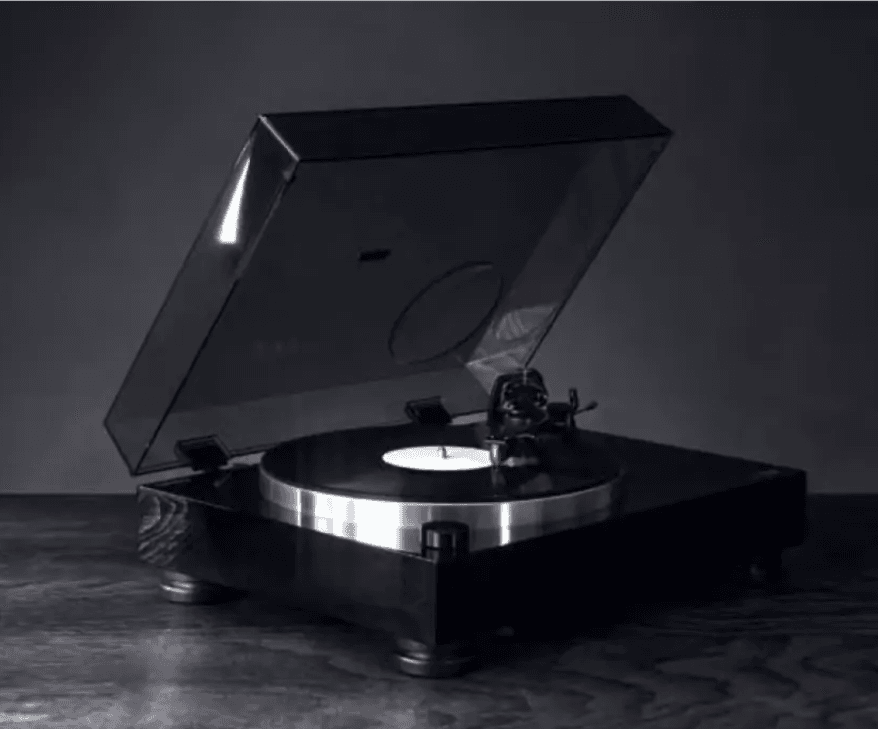
When you purchase through links on our site, I may earn an affiliate commission. Here’s how it works.
Reloop HiFi: Turn X - Premium Class HiFi Turntable System (Introduction)
We are happy to introduce the Reloop Turn X - a quartz-driven, high-end turntable that impresses in more ways than just its sound ...





